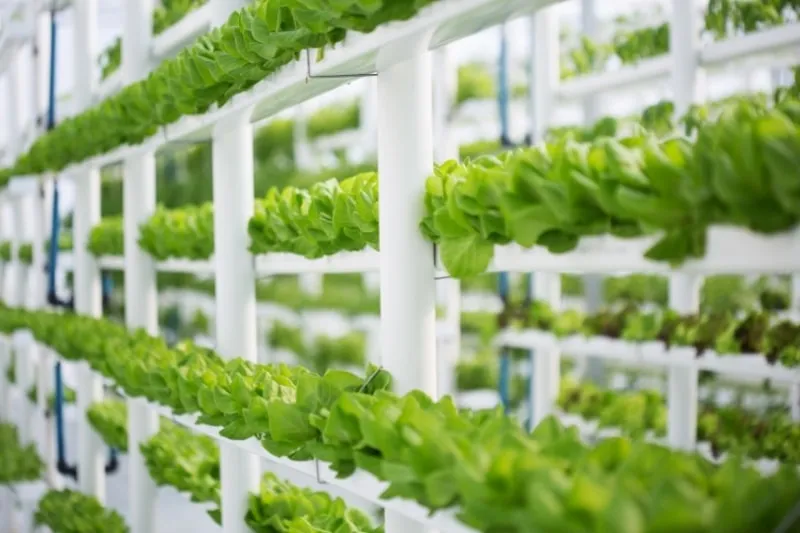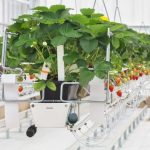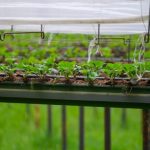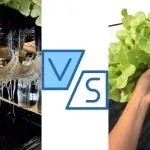Aeroponics is an innovative method of growing plants without soil, and many people are curious about what the pros and cons of aeroponics are. This growing technique involves suspending plant roots in the air and feeding them with nutrient-rich mist, making it a popular choice among urban farmers and gardeners alike.

By understanding the advantages and disadvantages of aeroponics, you’ll be better equipped to determine if this growing method is the right choice for your needs. Some of the strengths of aeroponics include higher crop yields, less water usage, and the absence of soil-related issues, while there are also potential drawbacks like increased initial costs and susceptibility to certain problems.
As you explore the world of aeroponics, keep in mind the unique aspects of this technique and how they may impact your gardening journey. Remember to weigh the advantages and disadvantages before diving in, to ensure that you can make the most of your aeroponic experience.
Advantages of Aeroponics
What is aeroponic gardening and why does it work so well in urban farming? Here are some of the benefits that this method provides:
- Faster Growth: One of the primary benefits of aeroponic systems is the faster growth of plants. The roots are exposed to an ample amount of oxygen 24/7, allowing plants to grow quicker than traditional soil-based methods.
- Water Efficiency: Aeroponic systems are highly efficient in water usage. They use a recirculating water system that can save up to 90% of water compared to conventional agriculture, reducing both environmental impact and costs.
- Healthier Plants: These systems promote healthier plants due to the sterile environment they provide. By suspending roots in the air, the risk of soil-borne pests and diseases is significantly minimized, leading to safer and healthier produce.
- Space Utilization: Aeroponic systems have an advantage when it comes to space utilization. They can be stacked vertically, maximizing growing areas even with limited space. This makes them ideal for urban farming and small-scale gardening. What are aeroponic towers? They are a type of vertical aeroponic system.
- Control Over Growing Environment: With an aeroponic system, growers have better control over the environment. Factors such as nutrient levels, pH, and temperature can be precisely adjusted for specific plant needs, improving growth and yield.
In summary, the advantages of aeroponics include faster growth, water efficiency, healthier plants, optimized space utilization, and improved control over the growing environment. By adopting an aeroponic system, you can enjoy a friendly, efficient, and productive gardening experience.
Advantages Comparison with Soil and Hydroponics
Why choose aeroponics? Aeroponics is becoming increasingly popular as an alternative to traditional soil and hydroponic growing methods. In this section, we’ll discuss several advantages of aeroponics when compared to soil and hydroponic growing methods.
Efficient use of water and nutrients: Aeroponic systems use a fine mist to deliver nutrients directly to the roots of the plants, which makes it a highly efficient method for nutrient and water use. It requires significantly less water and nutrients than soil-based systems, and even less than hydroponics. This makes aeroponics an appealing choice for areas with limited water resources or for those looking to reduce their environmental footprint.
Faster growth and higher yields: Your plants grow faster and bigger in aeroponics than in soil and many hydroponic systems because they receive a more oxygen-rich environment. With direct access to nutrients, plants develop stronger root systems, promoting faster growth and higher yields. This can be especially beneficial if you’re using a greenhouse to extend the growing season. Find out what can be grown in aeroponics.
No growing medium necessary: With aeroponics, you eliminate the need for a traditional growing medium like soil or perlite, which can save money and simplify the growing process. It also reduces the chance of pests and diseases, as there’s no soil for them to live in, which means less time and effort spent on pest control.
Adaptable to various methods: Aeroponics can be combined with other growing methods, such as deep water culture and aquaponics, offering more flexibility in your setup. This adaptability allows you to fine-tune your system for the specific needs of your plants while maintaining the benefits of aeroponics.
Optimal humidity and air circulation: Aeroponic systems provide an ideal environment for optimal humidity and air circulation, which promotes healthier, more resilient plants. In addition, since the roots are exposed to the air, there’s no risk of over-watering as there might be with soil or some hydroponic techniques.
Remember, each growing method has its pros and cons, and the choice you make will depend on your specific needs, preferences, and resources. Aeroponics offers a unique set of advantages compared to soil and hydroponics, making it an option well worth considering for your gardening or farming endeavors.
Disadvantages of Aeroponics
As with any growing method, there are some cons of aeroponics that you should be aware of before deciding to use this technique. Although aeroponics comes with numerous benefits, it also has a few drawbacks that could be crucial in making your decision.
- High Initial Cost: Setting up an aeroponic system requires a significant investment due to the need for specialized equipment such as high-pressure pumps, misters, and timers. Building an aeroponic system from scratch also involves significant costs, above and beyond the initial setup. Additionally, ongoing expenses may increase due to the use of electricity to power these components. Still, a do it yourself aeroponics system at home is possible if you have the right guide.
- Inherent Complexity: Compared to traditional soil-based gardening methods, aeroponics involves a more complicated technological approach. It requires proficiency in technology and skills in adjusting nutrient formulas, monitoring pH levels, and maintaining timely operation of inputs like pumps and misters. This might be difficult for those who are comfortable with conventional gardening techniques. Here’s how to handle proper aeroponics spray timing.
- Dependence on Technology: Aeroponic systems heavily rely on pumps, timers, and electricity. Any malfunction or failure in these elements can cause severe problems – unlike conventional gardening where plants can survive short periods of neglect. In an aeroponic system, any failure can lead to the rapid death of plants. Thus, it becomes crucial to have backup measures in place against potential malfunctions.
- High Maintenance: The upkeep of an aeroponic system is more demanding compared to traditional soil-based gardening. This includes regular cleaning of the system to prevent the buildup of algae or bacteria that could damage plants, as well as frequent checks and adjustments to ensure all components are working correctly.
- Energy Usage: Aeroponic systems use more energy than traditional soil gardening due to the need for continuous operation of misters and possibly lights if indoors.
In conclusion, while the cons of aeroponics may seem daunting, it is essential to weigh these against the advantages. If you are willing to invest time and money in learning and maintaining an aeroponic system, you may find the benefits far outweigh the drawbacks. However, if you prefer traditional methods or find technology confusing or expensive, aeroponics might not be the best choice for your gardening endeavors.
Related: Which is better: hydroponics or aeroponics? Find out from our comparison guide!
Learn about high pressure vs low pressure aeroponics.







